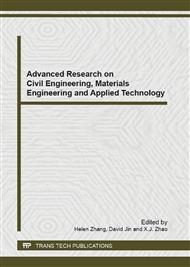p.284
p.289
p.293
p.298
p.304
p.309
p.315
p.322
p.329
The Experimental Study on Internal Force Redistribution of High Strength Steel-High Strength Concrete Continuous Composite Beam
Abstract:
To study the internal force redistribution of high strength outer-plated steel-high strength concrete continuous composite beam, static load tests of two continuous composite beam specimens were conducted. The paper analyses the causes of internal force distribution of continuous composite beams. By using high strength steel and high strength concrete reasonably, plastic strain on sections of both the negative and positive maximum moment got fully developed at the load-bearing limiting state, and the continuous composite beams have sufficient plastic rotation ability and ductility to develop full moment redistribution.
Info:
Periodical:
Pages:
304-308
Citation:
Online since:
December 2013
Authors:
Price:
Сopyright:
© 2014 Trans Tech Publications Ltd. All Rights Reserved
Share:
Citation:


